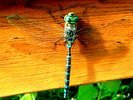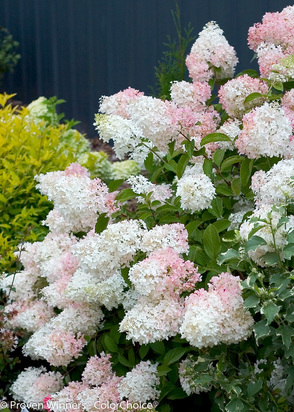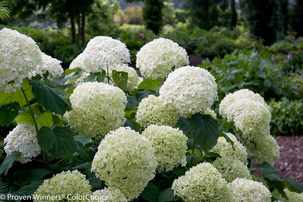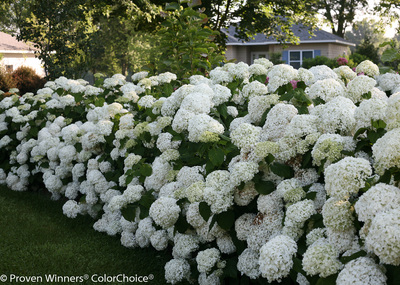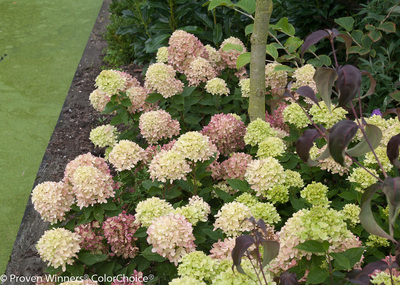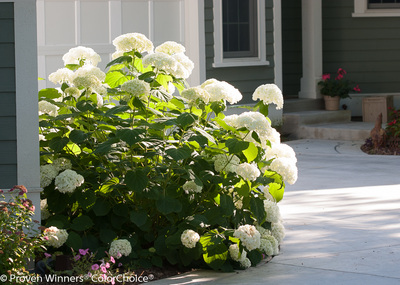|
In recent years, hardy hydrangeas have become one of the most popular flowering shrubs and it's easy to understand why. Hydrangeas are showy, versatile, adaptable, and easy to maintain.
Flowers Panicle hydrangeas are said to have cone-shaped flowers, but I only partially agree with that description. I would say that the cone shape may be very distinct or very vague, depending on the variety. Flower size also ranges greatly. Smooth hydrangeas have broader, dome-shaped flowers. Flower size is more consistent (about 6-12" in diameter) between varieties. With regard to flower colour, hardy hydrangeas are endless shades of white, pink, and lime. As the flowers age, they often take on changing tones and/or different colors. Hardy hydrangea flower color is unaffected by the soil's pH level. Foliage Panicle hydrangeas have reddish, woody, sturdy stems, whereas smooth hydrangeas have green, flexible, relatively soft stems. This is because panicle hydrangeas regrow on previous season's growth and smooth hydrangeas grow anew from the ground each year. Panicle hydrangea leaves also tend to be darker green and more leathery; smooth hydrangea leaves are lighter green and softer. Pruning A major difference between panicle and smooth hydrangeas is their pruning requirements. Panicle hydrangeas only need only a light annual trimming of the branch tips. (The exception to this is if you have an old panicle hydrangea that is not blooming well any more. In that case, the hydrangea will need "motivation" to bloom again. Just cut back a few of the oldest stems as low to the ground as possible in early spring.) Smooth hydrangeas need a hard annual pruning in early spring, Cut back all stems to about 3-6" from ground level. For this reason, smooth hydrangeas are the better choice if your desired planting site is subject to heavy winter snow loads. Plant Size A mature hardy hydrangea can be as little as 3' x 3' or as large as 10' x 10', depending on the variety. Usage As demonstrated in the photo gallery below, hydrangeas can be planted as:
Note - Tree hydrangeas are simply hydrangea shrubs trained into a tree form. This process takes several years of selective pruning. If you have the patience, any hydrangea can be trained into a tree (otherwise, ready-made tree hydrangeas are available.) Planting and Growing Information Hydrangeas are easy to grow but they do need moist soil. Hydrangeas resent being dry and they will show it. If you prepare your soil properly, add mulch around the shrub base, and water deeply but infrequently, your hydrangea should thrive. Different hydrangea varieties tolerate varying degrees of shade. Generally speaking, hydrangeas are adaptable to sites that receive a minimum of 3 hours of sun daily. Since hydrangeas flower prolifically, fertilizing is a good idea. For the first year, only use bone meal and transplant fertilizer. After that, apply a slow-release fertilizer yearly to maximize flower production. Recommended Varieties I've yet to meet a hydrangea that I didn't like, but here is a broad sampling of the available varieties: Hydrangea Paniculata 'Bombshell'
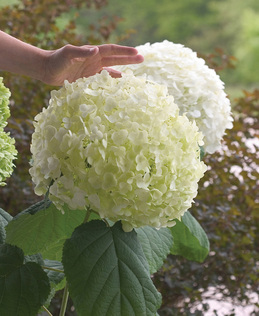 Hydrangea Arborescens 'Incrediball' Incrediball is the new and improved version of 'Annabelle'. (Annabelle was discovered in Anna, Illinois in 1910.) Though lovely, Annabelle's blossoms tend to flop, giving the plant a messy appearance. Should a heavy rainstorm strike an Annabelle, it looks more like a tornado touched down on it. On the contrary, Incrediball has remarkably stiff, strong stems to keep the flowers upright. And the kicker is, Incrediball's flowers are even bigger, reaching up to 12" in diameter! The flowers open lime green, turn white when fully open, and then revert back to lime green. Incrediball grows 4-5' high and wide. Hydrangea Paniculata 'Little Lime' Little Lime is my latest hydrangea infatuation. We had a beautiful display of them at our front entrance last season and I couldn't keep my eyes off of them. On several occasions, I got close to admire their mesmerizing, artfully colored blossoms. Little Lime has dense flower clusters, ranging from white to lime to pink, and everything in between. It is highly productive in terms of flowering. Little Lime is a dwarf hydrangea, topping out at about 3' high and wide.  Hydrangea Paniculata 'Quick Fire' Quick Fire is a valuable variety because it starts blooming one month earlier than any of the other hardy hydrangeas. Quick Fire has a loose and airy flower shape. The blossoms emerge white, turn to pink, and eventually deepen to a cherry red. Quick Fire is one of the largest hydrangeas, maturing to 6-8' high and wide. Hydrangea Paniculata 'Fire Light' 2014 was only the first year we grew Fire Light. However, its unique flower color and shape makes it worthy of mentioning. Like most pink hydrangeas, Fire Light flowers start out white and darken to a rich pink color. The flower panicles have a particularly distinct, dramatic shape. Fire Light grows anywhere from 5-6' high and wide. In Summary...
Hardy hydrangeas are exceptional flowering shrubs for our area. If you see a hardy hydrangea variety that I don't mention here, give it a try anyway. Chances are you will love it. Check out the Proven Winners website to preview many more hydrangeas, including ones that will be released in 2016. I can't wait to try them all!
36 Comments
|
